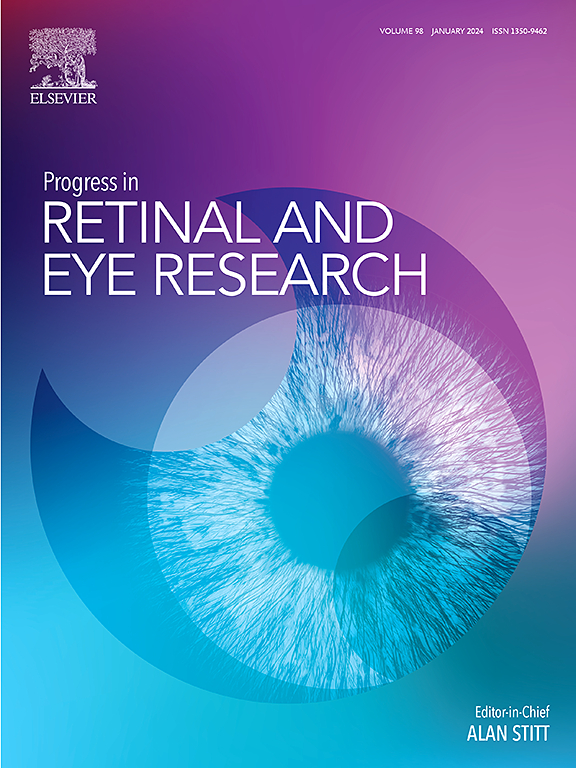Pericytes in the optic nerve head
IF 14.7
1区 医学
Q1 OPHTHALMOLOGY
引用次数: 0
Abstract
Pericytes are a unique population of contractile mural cells and are an essential part of the microvasculature. In the retina and brain, pericytes play crucial roles in regulating blood flow, maintaining the blood-brain barrier, signaling with neighboring cells, and depositing extracellular matrix. Pericyte dysfunction is an early process in a variety of neurodegenerative conditions. However, remarkably little is known about pericytes at an early site of neurodegeneration in glaucoma, the optic nerve head (ONH). This work summarizes the current understanding of pericyte contributions to ONH physiology, identifies potential roles in glaucomatous pathophysiology, and uncovers open questions at the intersection of these areas. We surveyed the literature to identify the roles of ONH pericytes in the context of health and glaucoma. Additionally, we probed for the presence of pericytes along microvasculature in mouse, nonhuman primate, and human donor ONH tissues. We identified an association between factors influencing ONH dysfunction in glaucoma and factors influencing pericyte dysfunction in other neurodegenerative conditions. Pericytes exist in the mouse, nonhuman primate, and human ONH, implicating their capacity for local function. ONH pericytes represent a promising but underexplored target for treating microvascular impairment in glaucoma. Investigating the contribution of pericytes in both healthy and disease states can help inform mechanisms of dysfunction in glaucomatous pathology, paving the way for the development of novel therapeutic strategies.
视神经头的周细胞。
周细胞是一种独特的可收缩壁细胞群,是微血管系统的重要组成部分。在视网膜和大脑中,周细胞在调节血流、维持血脑屏障、与邻近细胞传递信号和沉积细胞外基质等方面起着至关重要的作用。周细胞功能障碍是各种神经退行性疾病的早期过程。然而,对于青光眼神经退行性变的早期部位——视神经头(ONH)的周细胞,我们所知甚少。这项工作总结了目前对周细胞对ONH生理的贡献的理解,确定了青光眼病理生理的潜在作用,并揭示了这些领域交叉的开放性问题。我们调查了文献,以确定ONH周细胞在健康和青光眼的背景下的作用。此外,我们在小鼠、非人灵长类动物和人类ONH供体组织中检测了微血管周围细胞的存在。我们发现影响青光眼ONH功能障碍的因素与影响其他神经退行性疾病周细胞功能障碍的因素之间存在关联。周细胞存在于小鼠、非人灵长类动物和人类ONH中,暗示它们具有局部功能的能力。ONH周细胞是治疗青光眼微血管损伤的一个有希望但尚未开发的靶点。研究周细胞在健康和疾病状态下的作用可以帮助了解青光眼病理功能障碍的机制,为开发新的治疗策略铺平道路。
本文章由计算机程序翻译,如有差异,请以英文原文为准。
求助全文
约1分钟内获得全文
求助全文
来源期刊
CiteScore
34.10
自引率
5.10%
发文量
78
期刊介绍:
Progress in Retinal and Eye Research is a Reviews-only journal. By invitation, leading experts write on basic and clinical aspects of the eye in a style appealing to molecular biologists, neuroscientists and physiologists, as well as to vision researchers and ophthalmologists.
The journal covers all aspects of eye research, including topics pertaining to the retina and pigment epithelial layer, cornea, tears, lacrimal glands, aqueous humour, iris, ciliary body, trabeculum, lens, vitreous humour and diseases such as dry-eye, inflammation, keratoconus, corneal dystrophy, glaucoma and cataract.

 求助内容:
求助内容: 应助结果提醒方式:
应助结果提醒方式:


